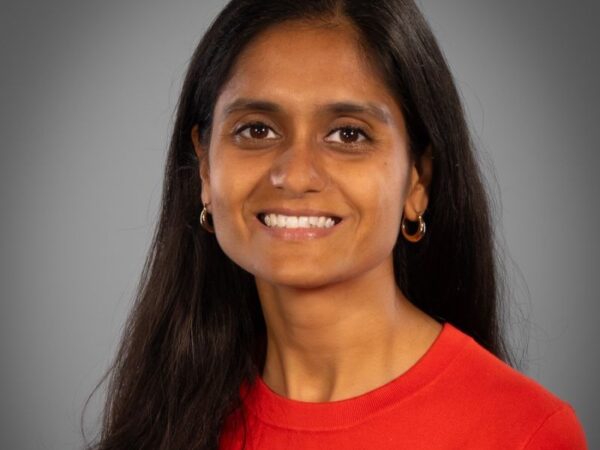School administration experts and a San Antonio school district transform schools
Demographics are changing in Texas, and they have been for a while. Yet schools are still grappling with how changing demographics affect the students they serve.
As of the 2017-2018 school year in Texas, White students make up 27.8% of all public-school students, down from 43 percent in 2000. Hispanic students are now the majority at 52.4%, while Black students make up 12.6% and Asian students are at 4.4%.
These demographic shifts are not expected to slow down any time soon. Texas population projections indicate demographics will continue to change, with the Hispanic population surpassing the non-Hispanic white population by 2022.
Dr. Jean Madsen, professor of K-12 administration, sought to prepare schools for these changes with the help of funding from the W.K. Kellogg Foundation.
Madsen and her team forged a partnership with Southwest ISD in San Antonio. Together, they surveyed students, parents, teachers and administrators to measure inclusivity and identify improvement opportunities.
Through self-awareness from the survey results and professional development, leadership learned how to better serve the diverse student body. This brought positive changes in parental engagement, career readiness, discipline and literacy.
Ultimately, the work resulted in a comprehensive school improvement model. Dr. Elisabeth Luevanos, director of the Kellogg School Improvement Grant, hopes this model will help many schools provide a better educational environment for every student.
“I am passionate about this research because when I first decided to become a teacher I loved making a difference in people’s lives and providing an exceptional environment for all students regardless of their race, regardless of their background,” Luevanos said. “I believe that this research addresses that.”
About SWISD
“We chose Southwest ISD because the diverse student body and the feeder pattern allowed us to try the school improvement model across grade levels,” Madsen said.
The district borders Atascosa County on the Southwest corner of San Antonio. With a total enrollment of 14,000, the district is in the unique position of serving both urban and rural students.
Frances Barcenez, executive director of external programs and purchasing at SWISD, works as the district’s liaison to Madsen’s team.
“What is unique to Southwest ISD is we are 70% at risk,” Barcenez said. “Some of our campuses are 99% economically disadvantaged and then other parts of campuses have slightly wealthier populations.”
Luevanos said they developed an authentic relationship with SWISD through visiting the schools often and working together to build a more inclusive space for students.
“We really have developed personal relationships with these individuals,” Luevanos said. “They know that we are not there just to get research and leave. We really are there to help improve their practices, improve the educational environments for their students, their community, for their parents and also for themselves.”
With the diverse student body in mind, they created individualized surveys for students, parents, teachers and administrators. Luevanos said most people think survey development is quick, but because they were intent on collecting the most accurate results they performed an extensive literature review to inform their survey questions.
Through identifying indicators of inclusive organizations, they developed three areas the survey would focus on:
- • Inclusive leadership – the idea that if a leader practices inclusion, then those under the leader will value and practice inclusion as well
- • Organizational justice – means stakeholders, in this case, students and parents, in an inclusive school feel that they are accepted and their rights are respected
- • Organizational inclusive performance – occurs when teachers feel they can perform in inclusive schools and feel comfortable talking about race and diversity issues
“Creating a successful survey really is about ensuring readability, but also looking carefully at those questions and how the person taking the survey is able to understand it and answer it appropriately,” Luevanos said.
As a former teacher and school administrator, Luevanos was specifically tasked with creating the survey tailored to students.
“My part of the research was developing the student survey, which looks at the students’ perspectives of the abilities of their teachers and school leaders to lead a racially diverse school with changing demographics,” Luevanos said.
Barcenez said they quickly found the language the researchers use was not translating well to most students. They decided to invite students to review potential survey questions, which garnered buy-in from the student population.
“It is one of the most impactful student voice opportunities we have ever seen,” Barcenez said. “The students are very honest and they love participating in a research project because it feels like it is one step in the door to college.”
After the quantitative surveys, the team noticed they were left with more questions. They administered qualitative surveys to fill the cracks, giving survey respondents the opportunity to tell them why they felt a certain way.
“The qualitative interviews were able to give us the why, the questions that we cannot necessarily glean from the data results,” Luevanos said. “Respondents were able to elaborate a little bit more instead of just looking at the scale that we have provided for them.”
Most researchers would stop there. However, Madsen’s team took the results from surveys and along with the district, decided on the next steps for improving their schools.
Engaged parents, eager learners
The first issue they tackled was parent engagement. SWISD struggled to attract parents to school functions. Madsen said often times parents of color do not feel comfortable coming to the school. They worked to change this by making school activities more accessible for all parents.
Barcenez reached out to parents and asked how the school could interest them in attending events. The responses she received changed the way they interact with parents.
“Their clear statement was, ‘You ask us to…[come to meetings] on nights where we have to feed our children and you are taking up our dinner time, or on other opportunities it is my only day off and I want to spend it doing something fun with my family,’” Barcenez said.
From there, they started feeding parents at after school events and decided to find out where parents would have fun. They held an event at a local flea market and amusement center and had 324 parents and family members attend.
“We put it where the parents are, not where we are,” Barcenez said. “And that makes a big difference when we think about what is best for parents, not necessarily what is easiest for the school.”
Through surveying, Sylvia Acuña, principal of Sky Harbour Elementary, learned that her parents wanted information about health. She created a health fair and 5k run for her parents and students, bringing in 20 agencies specializing in various health education and services.
Parent engagement led to positive changes. Acuña’s attendance has risen from 94% to 96.5% and she had less than 1% suspensions last year, something she says is because students know parents are engaged.
Dr. Lloyd Verstuyft, superintendent at SWISD, said the project helped take their parents from active to engaged, which is a huge point of pride for the school district.
“We have done other programs to enhance and elevate parental engagement, but we have never seen anything that has the sustainability potential that this program with the university has had,” Verstuyft said.
Critical transition years
The second-year focus was mitigating anxiety for students who are in critical transition years.
“In terms of academics, we see this drop from fourth grade to fifth grade when students transition from elementary to middle school and also when they transition from middle school to high school,” said Dr. Wen Luo, associate professor of educational psychology.
Resnik Middle School invited incoming middle-schoolers to tour the campus prior to the school year to alleviate anxiety students may feel on their first day. Resnik social worker, Analisa Arizpe, said the event gave students the opportunity to meet school administrators, which helped students have a familiar face on their first day.
“We have gotten a lot of positive feedback from the now sixth graders, former fifth graders at the elementary, about what that activity meant to them,” Arizpe said. “And I can only imagine the impact it has had on the start of their year so far.”
Goals accomplished
Through the district’s hard work and the partnership with Madsen’s team, SWISD is now scoring within the top three of all 13 school districts in San Antonio for math performance.
Verstuyft sees the impact in his schools and often hears firsthand from parents how the project transformed their school experience.
He was getting a haircut recently and to his surprise, his hairdresser was a parent from one of his schools. She told him that she had an amazing experience the previous month participating in a Kellogg parent training week.
“The way she spoke about what she learned in that opportunity and the way she felt about being heard in that professional development, along with our campus leadership, I think was as prideful as anything that I have been involved in in the 30 years I have been in the district,” Verstuyft said.
What’s next
Madsen’s team is in their third year of the project. They are focused on improving literacy and maintaining sustainability when the Kellogg grant ends.
“We want to make sure that once we leave, there will be sustainability,” Madsen said. “And that they will continue working on their parent engagement, transition plans and all of the pieces.”
Kellogg extended Madsen’s grant for another six months allowing the team to focus on sustainability for the schools.
“I think we are really going to be pleased by the time we are finished in August of 2020,” Madsen said.
About the Writer
Heather is responsible for news coverage in the Department of Health and Kinesiology, as well as the Department of Educational Administration and Human Resource Development.
Articles by HeatherFor media inquiries, contact our Media Relations Coordinator, Ashley Green
Fundraising
To learn more about how you can assist in fundraising, contact Amy Hurley, Director of Development ahurley@txamfoundation.com or 979-847-9455



















